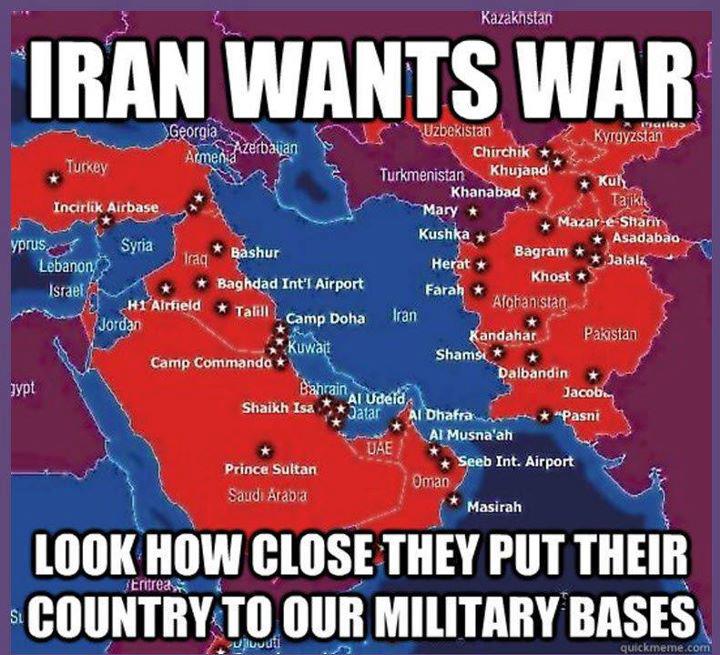What do two nations with a history of over
200 years of enmity and war do when they seek a change of discourse? Find a
common enemy. For Russia and Iran, traditional foes since the 18th century,
that common enemy is the United States.
We Americans need to remember that when
Reagan made a deal with Gorbachev to “tear down the wall”, the Iron Curtain,
Reagan pledged to the Russians that the U.S. would not expand NATO eastward
towards Russia. The U.S. has repeatedly broken that deal, the latest example is
the overthrow of the regime in Ukraine and the move to admit Ukraine to NATO.
Russian President Vladimir Putin dwelt on
the idea last month during a speech in Sochi. He said the United States regards
“Russia, because of its military might, China because of its rising economic
power and Iran because of its nuclear program” as “enemies.”
On that basis, earlier this year, Putin
tried to persuade China to transform the so-called Shanghai Cooperation Organization, set up to
fight Islamic terrorism, into a fully-fledged military alliance that would also
include Iran. When the Chinese wiggled out of the scheme, Putin focused his
attention on “closer cooperation” with Tehran.
Russia and Iran share a number of
grievances against the United States and its allies in Europe and the Middle
East. Both have been subjected to sanctions that have already hit their
economies, compounding the effects of global recession. Both claim that the current fall in oil prices
represents a conspiracy by Washington and its oil-rich Arab allies to push
Russia and Iran, both heavily dependent on oil export revenues, to the wall.
Remember, your Watchman believes that the Ezekiel 38-39 War will begin because
Russia and her allies covet the rich oil and natural gas resources in Israel’s
eastern Mediterranean basin.
Both Iran and Russia are persuaded that the
United States has long been targeting them for regime change via economic
pressure combined with “velvet revolution” dissent. After all, they need only
look as far as the Ukraine, Iraq, Syria, Libya and the Morsi overthrow in Egypt.
The worldview of influential circles in
Moscow as in Tehran could be described as classically 19th century, with an
emphasis on territory and the use of force. Russia is seeking a security
perimeter in Eastern Europe, the Baltic States and Trans-Caucasus. Iran locates
its own perimeter in Iraq, Syria and Lebanon. The two powers are also working
together to counter US influence in Central Asia with a mixture of bullying and
bribery.

Remember, after 9-11 the U.S. had Iran surrounded with a
military presence in Iraq, Afghanistan, and most of the “Stans” countries like
Kazakstan and Turkmenistan. See the map above.

The phrase “fortochka Obama,” meaning “the
Obama window of opportunity,” indicates the belief that America’s next
president might not be as pliable as the current one. Thus, Tehran and Moscow
are trying to use the “fortochka Obama” to achieve a number of goals.
First among these is to drag out talks on
Tehran’s nuclear program long enough for Iran to reach the so-called
“breakthrough” stage, which some experts believe might take another two years. Howver,
your Watchman believes Iran already has the “bomb”. Now what the Iranians need
is to marry “the bomb” to a ballistic missile system.
The next goal is to save Bashar al-Assad’s
regime in Syria to ensure that no Sunni government structure can emerge there.
Even if Assad controls what is known as “useful Syria,” that is to say 40
percent of territory with half the population, that would be enough.
The next goal is to reduce the effect of
sanctions. Russia has already agreed to market $20 billion worth of crude oil
on behalf of Iran, circumventing the US-led scheme to freeze a good part of
Iranian oil revenues. This goal is difficult with the recent plunge in world
oil process.
More important, Russia has agreed to help
speed up Iran’s nuclear program. Last month an agreement to build two more
reactors in Bushehr was signed in Moscow as part of an accord to double
bilateral trade within the next five years.
Having supplied China with S-400 surface-to-air
missiles, Russia is now expected to deliver similar weapons to Iran on the
basis of contracts signed almost a decade ago.
Russia and Iran are also working together
to exercise influence in both Iraq and Afghanistan before the next US president
tries to reverse the policy created by Obama’s Illuminati foreign policies.
Using the opportunity created by the so-called Islamic State, Iran is building
control on chunks of territory in northeastern Iraq with a view to secure a
corridor linking it to both Syria and Lebanon.
Moscow and Tehran are also developing joint
plans to modernize facilities in the Syrian port of Tartus used by both Russian
and Iranian navies.
By the time the “fortochka Obama” is
closed, Moscow and Tehran hope to have consolidated a firewall spanning a vast
territory from the Baltics to the Persian Gulf, shielding them against what
Putin and Iranian “Supreme Guide” Ali Khamenei designate as “American schemes.”


No comments:
Post a Comment